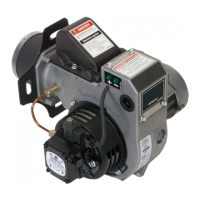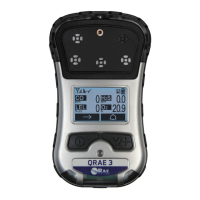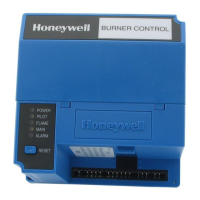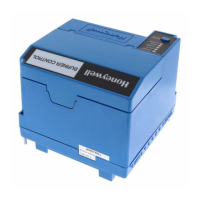9
Honeywell Titan SCBA, 20132
2. Applicable Facepieces
The Honeywell facepieces approved for use with
CBRN-certi ed SCBA, and accessories approved for
use with those facepieces, are listed in section III,
page 3. A t test must be performed with either:
a. A facepiece equipped exactly like the facepiece
to be worn with the SCBA, or
b. A facepiece equipped with all of the listed ac-
cessories, to simulate worst case.
3. Facepiece Selection
Select a small, medium, or large facepiece. Most
people will achieve a good t with a medium size
facepiece and should try that size rst, but if your face
is small or large, you may want to start with a small or
large size. You will have the opportunity to check the
seal of the facepiece and to wear it for several minutes
to determine its comfort before the Quantitative Fit Test
(QNFT) is started.
To determine if you have selected a size that ts:
a. For facepieces with a headnet, fully loosen the
lower headstraps. For facepieces with headstraps,
fully loosen all ve (5) headstraps. See Figure 1.
b. Pull the headnet or headstraps over the top of the
facepiece so that they are in front of the lens.
c. While holding the facepiece by the nozzle, put
your chin in the chin cup. See Figure 2. Make sure
no clothing or hair comes between your face and the
sealing area of the facepiece. Gently push the face-
piece against your face.
d. Flatten your palm so that you close off the inlet
as shown in Figure 3, and inhale lightly to check the
seal. The vacuum created by inhaling will slightly col-
lapse the facepiece. If a good t is achieved, the face-
Figure 1. Headstraps/Headnet
Figure 2. Chin in Chin Cup
c. Remove the facepiece from the case (if supplied).
d. Unfasten the Velcro transportation fasteners.
e. Lift the SCBA from the case.
2. Carton packaging
a. Remove the facepiece from the box (if supplied).
b. Remove the plastic transportation cradle from the
box with the SCBA connected to it.
c. Cut both locking straps securing the SCBA to the
transportation cradle.
d. Lift the SCBA from the cradle.
CAUTION
Exercise extreme care when engraving
identifi cation markings on SCBA
components. Engraving may induce
stresses in materials that, over time, could
propagate cracks. Plastic labels, dyno-
labels, and stickers may burn.
VI. OPERATION
WARNING
• To avoid the possibility of agent
contamination, the respirator should not
be used beyond six (6) hours after initial
exposure to chemical warfare agents.
• Prior to using the Titan SCBA for the
fi rst time, you must perform fi t testing as
described below.
• Do not wear this respirator if a satisfactory
fi t, as determined by the fi t testing described
below, cannot be obtained.
• Failure to comply with this warning may
lead to personal injury, illness, or death.
A. Fit Test Instructions for Facepieces
NOTE
To ensure an adequate t, each person who
will wear a CBRN-certi ed SCBA must pass a
quantitative t test with a minimum measured
t factor of 500 while wearing a facepiece of a
size and con guration exactly like the facepiece
that will be worn with the SCBA. To simulate the
weight of the second stage regulator as used
with an SCBA, use the Honeywell APR Adapter,
P/N 962900, equipped with two Honeywell
P/N 105005 P100 lters.
1. Introduction
a. To perform quantitative t testing using a TSI Porta-
Count, use the Honeywell APR Adapter, P/N 962900,
and the Honeywell Quantitative Fit Test Adapter, P/N
962920, to provide a means for drawing a sample
from the interior of the facepiece.
b. To perform quantitative t testing using an OHD
Quanti t
®
,
use the Honeywell Canister Adapter,
P/N 960150, modi ed per OHD instructions and the
OHD 9513-0113 adapter (available from OHD).
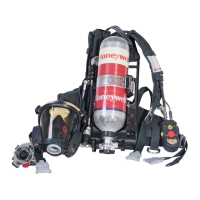
